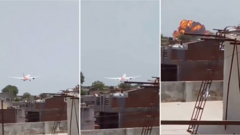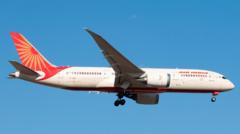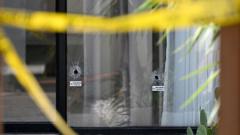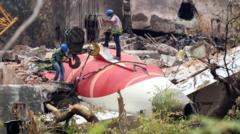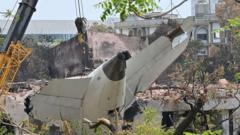As investigators sift through the wreckage of Air India Flight 171, they are exploring multiple possible causes for the crash that occurred shortly after takeoff. The complexity of the investigation is heightened by the need for meticulous analysis of flight data recorders and other evidence to uncover what went wrong.
Investigation into Air India Flight 171 Crash: What We Know So Far
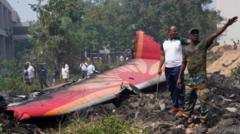
Investigation into Air India Flight 171 Crash: What We Know So Far
In the aftermath of the Air India Boeing 787 crash in Ahmedabad, investigators delve into multiple potential causes of this mysterious aviation disaster.
In one of India's most perplexing aviation disasters, Air India Flight 171 tragically crashed just moments after takeoff from Ahmedabad, claiming immediate attention from investigators working to unravel the events that led to this catastrophic incident. The Boeing 787 Dreamliner went airborne for less than 40 seconds before it descended into a busy residential area, sparking a fire that engulfed its remnants.
Initial findings suggest that investigators will have a narrow window of 30 days to issue a preliminary report, with the comprehensive analysis expected to take up to a year. Captain Sumeet Sabharwal and co-pilot Clive Kundar were in command of the aircraft, carrying 242 passengers and a substantial amount of fuel, when a sudden mayday call was issued, marking a chaotic descent that concluded in flames.
Aviation experts describe this case as a “controlled flight into terrain,” a term indicating a crash that occurs with the aircraft functioning optimally before losing control, a scenario seldom experienced. There are several potential causes under scrutiny, including bird strikes, fuel contamination, flaps extending incorrectly, maintenance errors, or even inadvertent crew actions.
Investigations will be methodical, leveraging triangulation and elimination methods, wherein physical evidence on-site is matched with flight data to discern a narrative of the tragedy. This involves examining every component of the wreckage, including damaged wires and engine structures. Initial hints about the engines’ performance during the crash may emerge from assessing their condition and damage patterns, which will indicate whether they were generating power at the moment of impact.
Critical to the investigation are the Enhanced Airborne Flight Recorders (EAFRs), commonly referred to as "black boxes," which will provide key insights into cockpit audio and flight data. These recorders include intricate details regarding engine performance, pilot maneuvering, and other in-flight metrics.
The investigation will extend beyond the wreckage and black boxes, encompassing an extensive review of Air India’s maintenance logs, operational history, pilot training records, and the overall service history of the aircraft. Real-time data has evolved remarkably; unlike earlier models which recorded limited parameters, today’s devices capture a wealth of information, aiding investigators in piecing together the circumstances surrounding such incidents more effectively.
In its ongoing examination, India's civil aviation authorities have noted that previous inspections of Air India’s Boeing 787 fleet did not raise any significant safety concerns. However, as the investigation unfolds, the collective insights and findings from domestic and international aviation safety bodies will be critical in determining whether this incident was an isolated anomaly or indicative of broader systemic issues within the aviation sector.
As inquiries progress, both the public and the aviation industry are keenly awaiting answers that may shed light on the calamity of Air India Flight 171.


